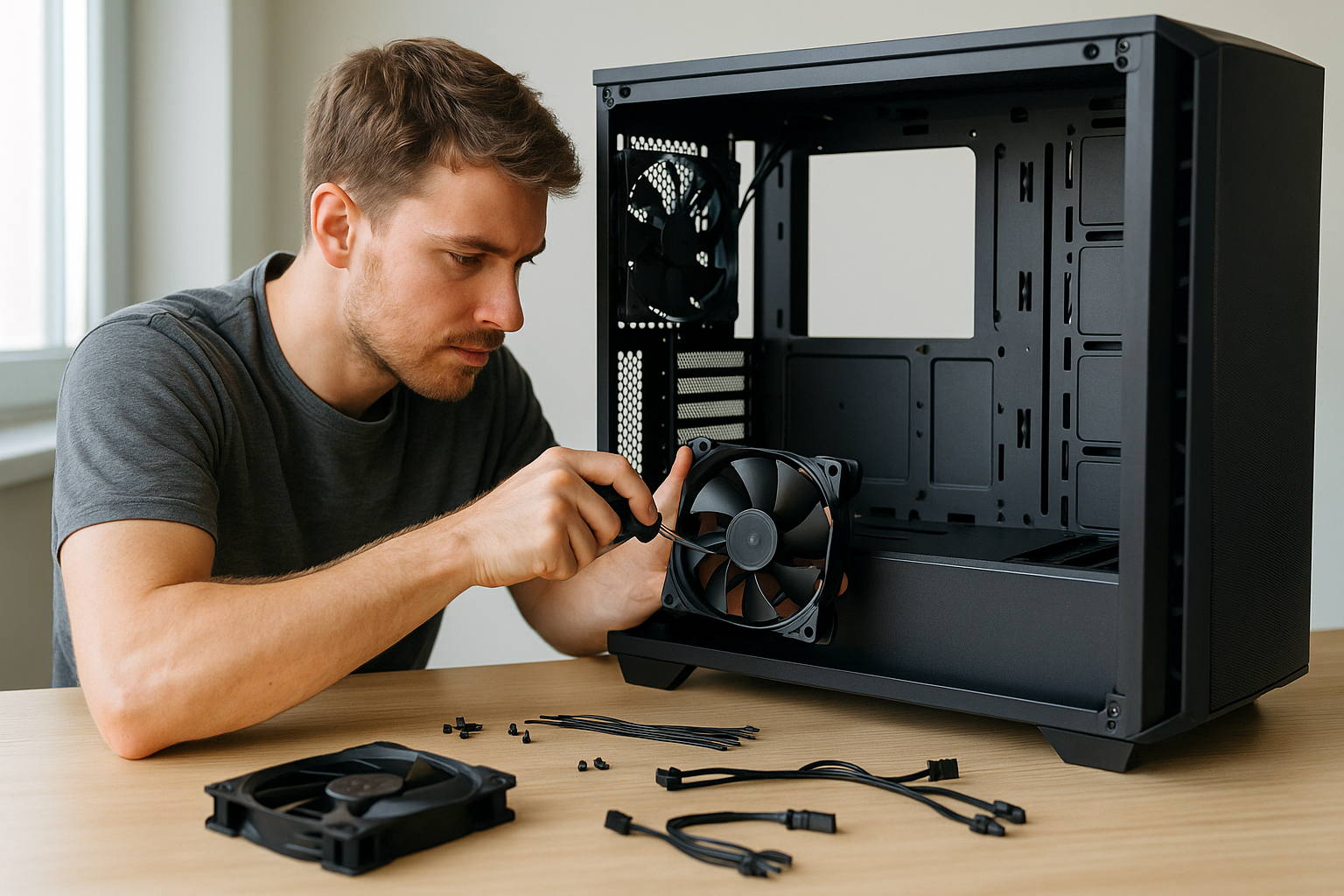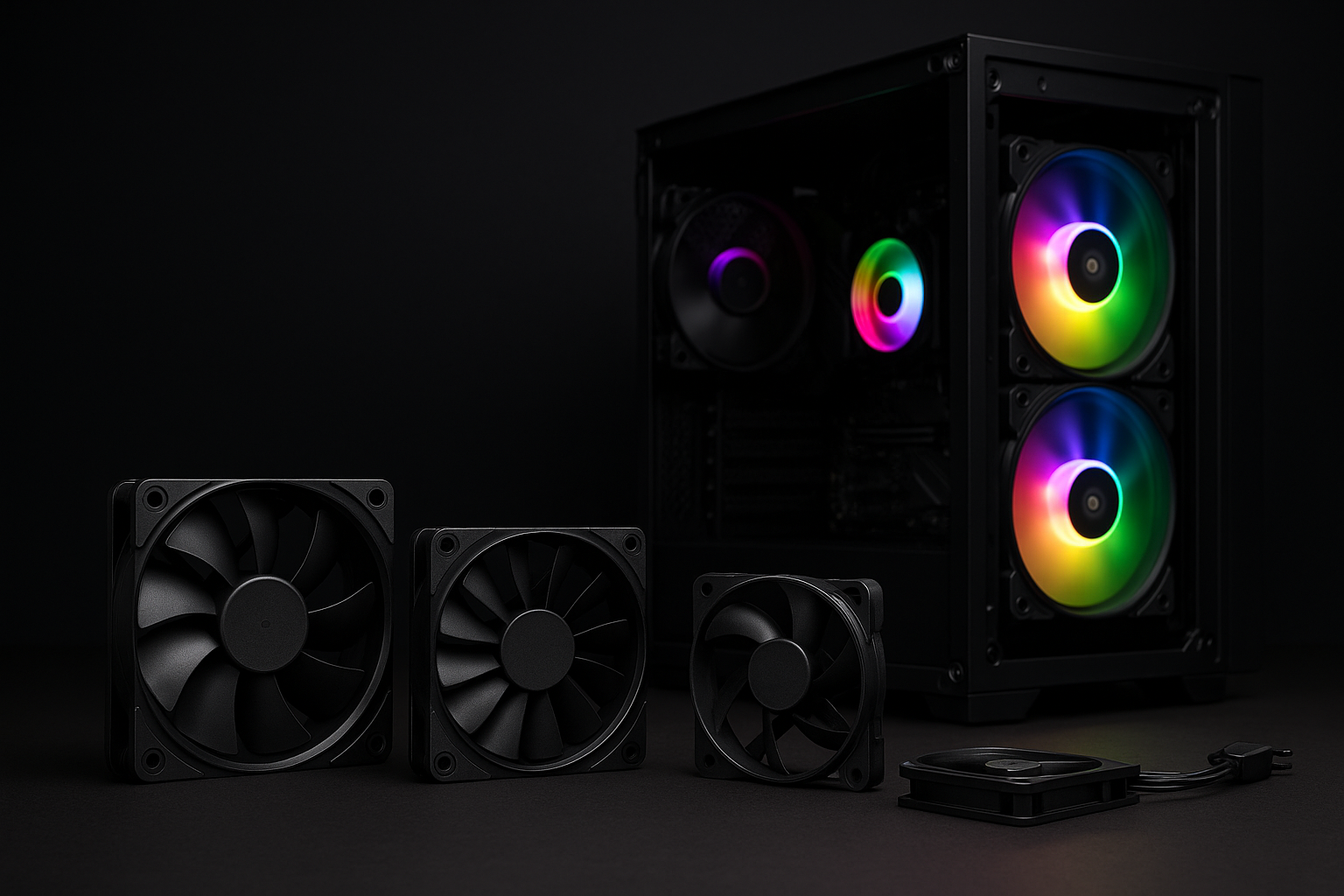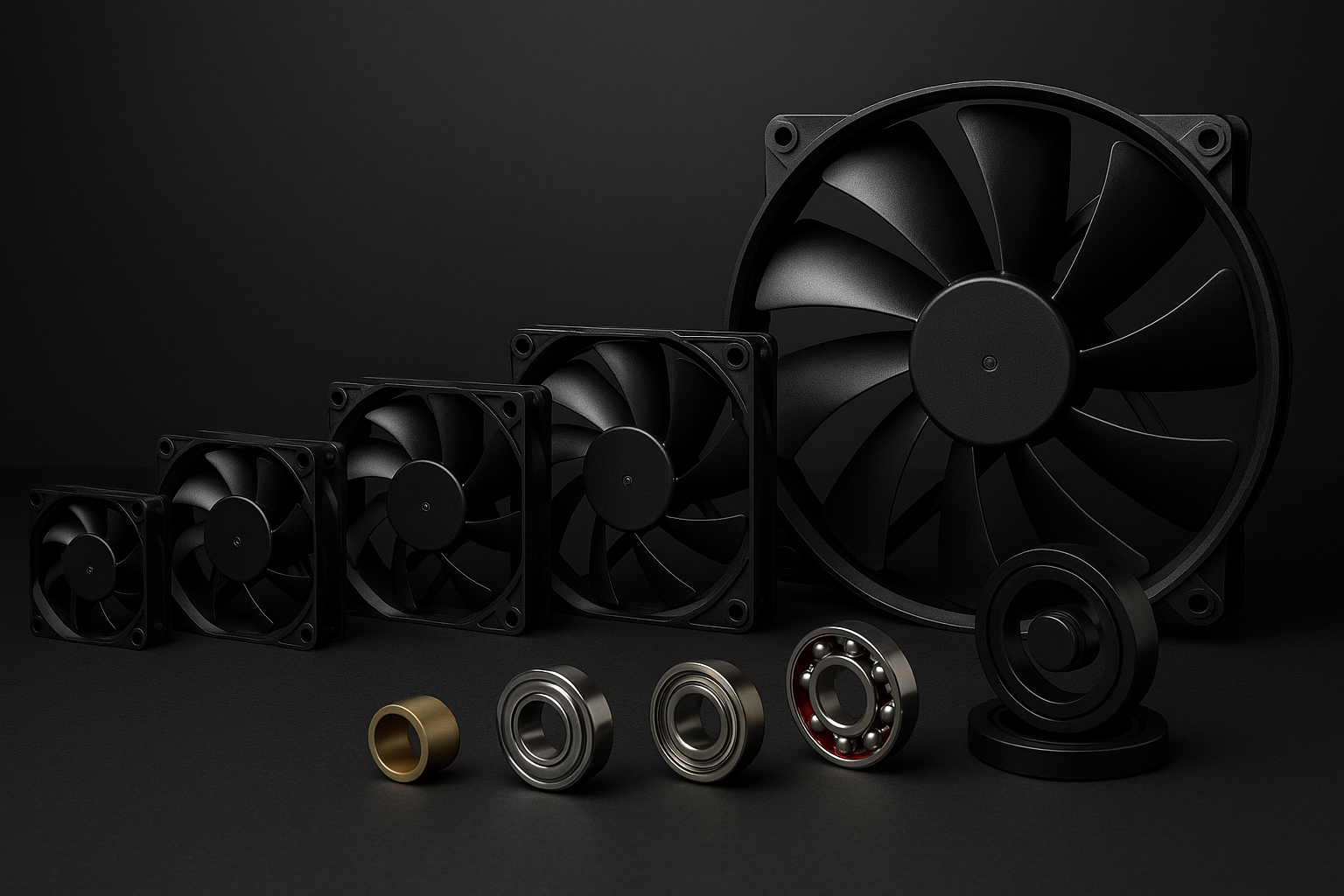- Blog
Fan Placement & Case Compatibility | Q&A

Table of Contents
ToggleWhat should I know about front intake?
-
Role: Pulls cool air into the case and feeds the GPU/CPU area.
-
Panel type matters:
-
Closed/solid glass or tight vents: use static-pressure fans to push through filters/grilles.
-
Mesh/open front: use airflow fans to maximize CFM.
-
-
Maintenance: Clean dust filters regularly to prevent flow loss.
-
How many/size: 2×120 mm or 2×140 mm intakes is a solid baseline for mid-towers.
How should I configure the rear exhaust?
-
Role: Expels CPU socket/VRM heat; stabilizes front-to-back flow.
-
Fan type: A quiet airflow fan (120 mm typical) is sufficient.
-
Tip: Tune the curve so rear exhaust RPM roughly tracks CPU temperature, avoiding unnecessary noise.
Should top fans be exhaust or intake?
-
Default: Exhaust—hot air rises and top exhaust supports natural convection.
-
When intake makes sense: In extreme cooling setups or with dense top radiators where extra fresh air is needed; be mindful of dust ingress.
-
Fan type:
-
Top exhaust (no radiator): quiet airflow fan(s).
-
Top radiator (240/280/360): static-pressure fans (push, pull, or push/pull).
-
How do I set up radiator fans correctly?
-
Choose static-pressure models to overcome fin resistance.
-
Mounting: Minimize gaps; use gaskets/shrouds if available to reduce bypass (leak) air.
-
Orientation:
-
Front-mounted AIO: usually intake (cooler liquid temps, slightly warmer case).
-
Top-mounted AIO: usually exhaust (warmer liquid temps, cooler case).
-
-
Push vs Pull vs Push/Pull:
-
Push (fans before radiator) is simplest and effective.
-
Pull eases dust cleaning but can recirculate if gaps exist.
-
Push/Pull adds performance at the cost of space and noise.
-
How do case panels and side glass affect fan choice?
-
Full glass/solid fronts: Prioritize static-pressure intakes or add side/bottom intakes if supported.
-
Mesh or perforated fronts/tops: Airflow fans work well and are quieter at a given CFM.
-
Glass side panels: No flow impact by themselves, but they encourage neat cable routing and fan aesthetics (ARGB, reverse-blade options).
-
LED/ARGB façades: Check that lighting frames/grilles don’t choke intake; match fan type accordingly.
What quick placement–fan-type matches should I follow?
-
Front (mesh/open): Airflow.
-
Front (closed/filtered/grille): Static-pressure.
-
Rear exhaust: Airflow (quiet).
-
Top exhaust (no rad): Airflow (quiet).
-
Top radiator: Static-pressure.
-
Front radiator: Static-pressure.
How do I keep pressure and dust under control?
-
Aim for slight positive pressure (intake CFM ≥ exhaust CFM) to reduce dust through unfiltered gaps.
-
Keep filters clean; retune curves after major dusting or hardware changes.
What control and curve tips help in daily use?
-
Use PWM control tied to CPU (for rear/top) and GPU or water temp (for front/radiator) where possible.
-
Find the sweet spot on each fan’s P–Q curve (good airflow at acceptable noise) rather than chasing maximum RPM.





